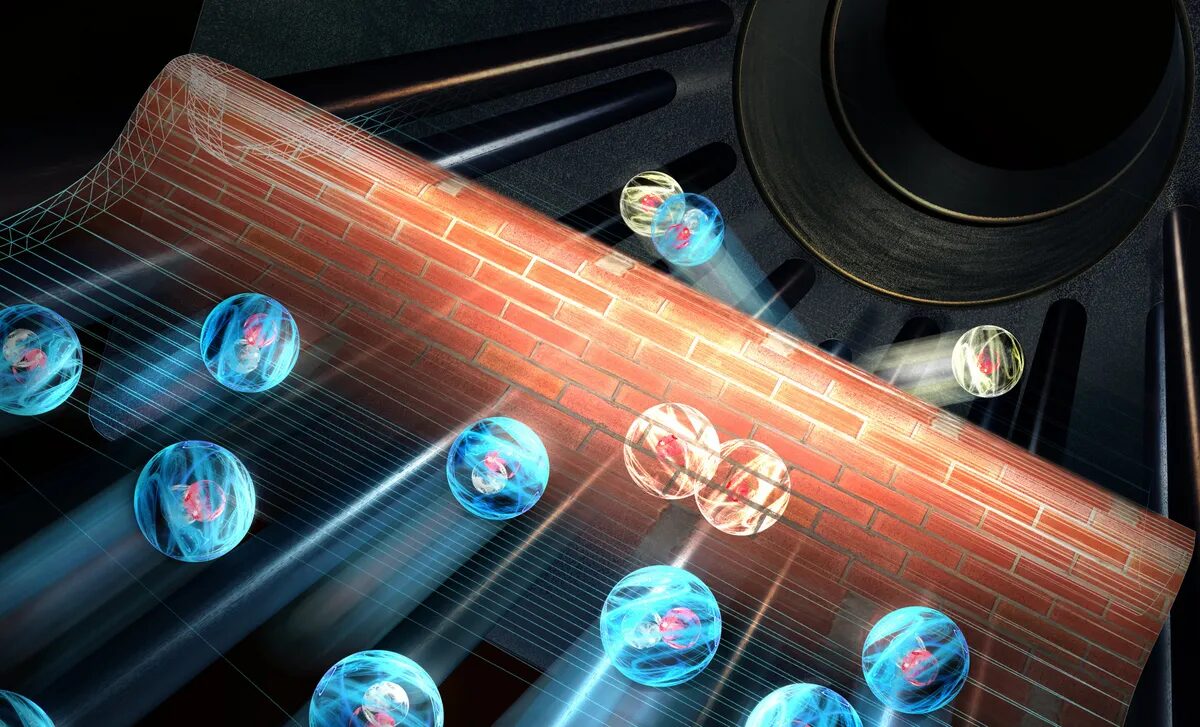
The rate at which the rare but crucial quantum phenomenon known as tunneling occurs has been measured experimentally for the first time, and found to match theoretical calculations. The theoretical estimates in this area had been regarded as highly uncertain, so confirmation in one specific case allows for greater confidence in estimating the frequency of other tunneling events.
Quantum tunneling is one of the many phenomena where subatomic particles behave in ways classical physics would say is impossible. In this case, an object trapped in a way that classically requires a certain energy to escape leaves the trap, despite having less than that amount of energy. It's a consequence, and proof of, the dual wave/particle nature of objects like electrons - a pure particle could not escape, but a wave occasionally can. Phenomena like alpha decay of atomic nuclei depend on quantum tunneling to occur.
Tunneling is essential to quantum physics, and calculations based on simple examples are set in undergraduate courses. Real-world examples are considerably more complex, however; knowing tunneling will occasionally occur in a specific situation, and knowing how often, are very different things. In a new paper, a team at the Universität Innsbruck provide the first measure of the reaction between a hydrogen molecule and a deuterium anion, finding it to be the slowest reaction involving charged particles ever observed.
The reaction (H2 + D− → H− + HD) involves a shift between a molecule of two hydrogen atoms - protons without neutrons - and an atom consisting of a proton and neutron orbited by two electrons. After tunneling occurs, one of the components of the molecule has a neutron, while the unattached atom, still negatively charged, is neutron-less. Although it looks like a neutron has been transferred, the reaction is considered to represent proton exchange.
Since hydrogen still makes up most of the universe, events like this that require no heavier elements happen very frequently on a cosmic scale, despite the odds in any specific encounter between hydrogen and deuterium being low. Moreover, if we are to have any hope of modeling more complex tunneling events we need to anchor our estimates with measures of simpler examples like this.
The Innsbruck team tested the rate of occurrence experimentally by filling a trap with a mix of deuterium ions cooled to 10 K (-263°C/-441°F) (warmed by collisions to 15 K) and hydrogen gas. At these temperatures transfer is classically impossible, but the presence of negatively charged hydrogen ions after 15 minutes indicated it had happened, albeit not often.
The rate is measured in cubic centimeters per second, giving a value of 5.2 × 10−20 cubic centimeters per second, with a margin of error of around a third, which is unlikely to mean much to anyone other than a quantum physicist.
It translates, however to transfer occurring one in every hundred billion times a deuterium anion collides with a hydrogen molecule. This might seem too rare to worry about, but even a small patch of gas contains many billions of molecules. Add enough deuterium and the number of collisions becomes immense.
Measuring the rate "requires an experiment that allows very precise measurements and can still be described quantum-mechanically," senior author Professor Roland Wester said in a statement. The idea for the experiment came to Wester 15 years ago, but the tunneling is so rare it took considerable effort to construct an experiment where it could be measured.
The work is published in Nature.



Wtf!!